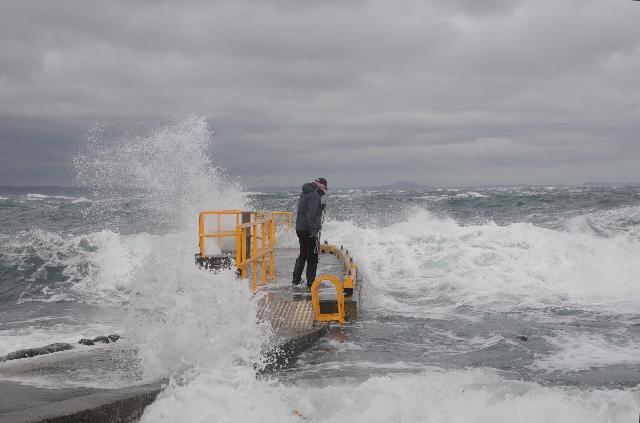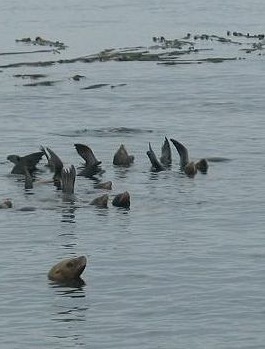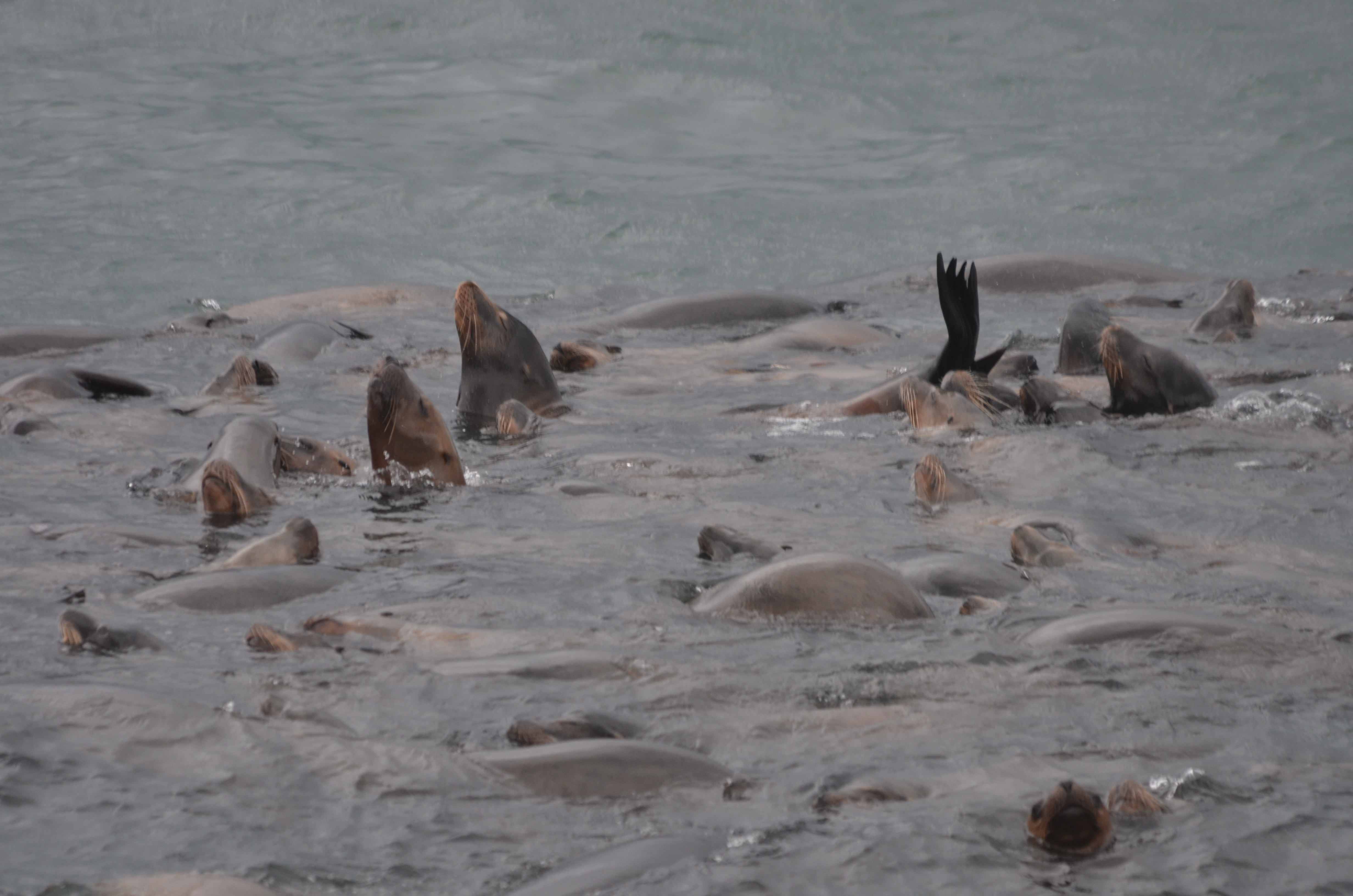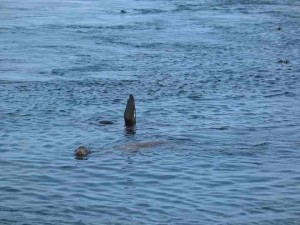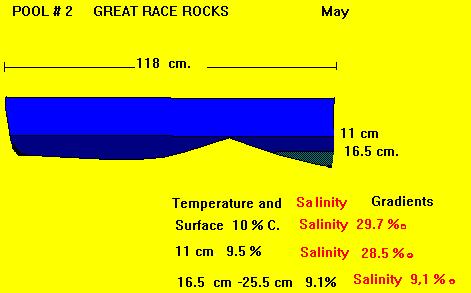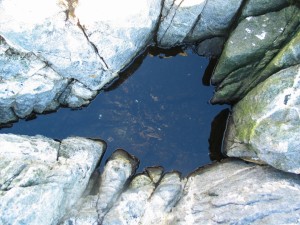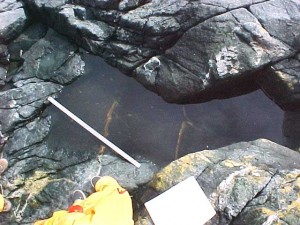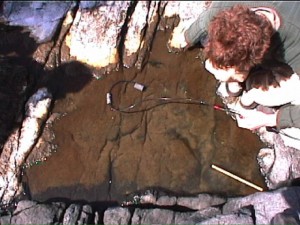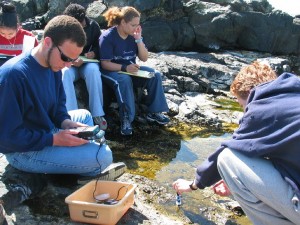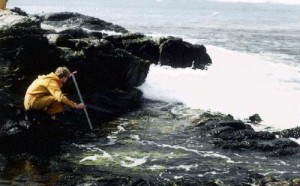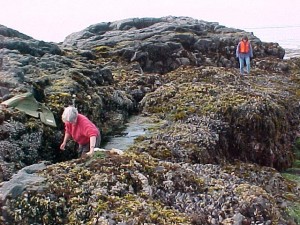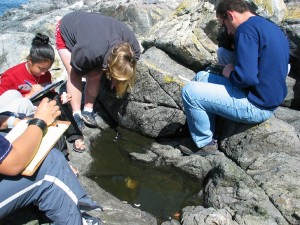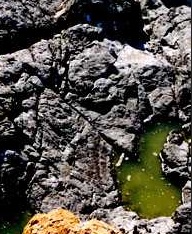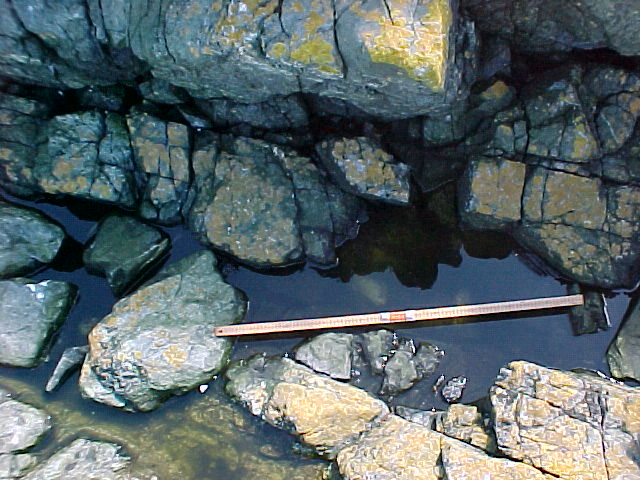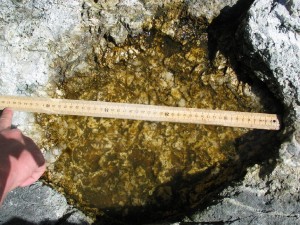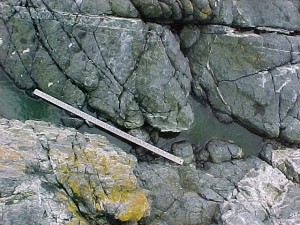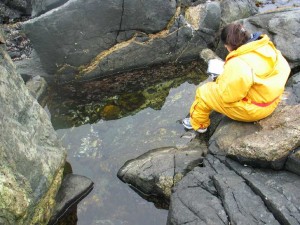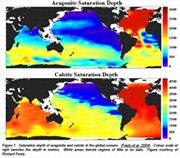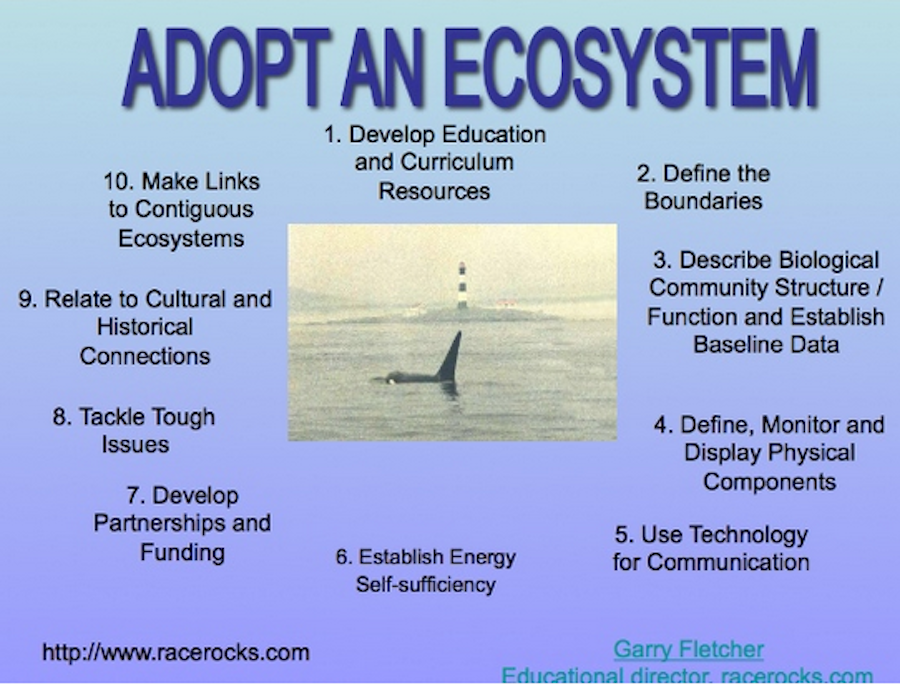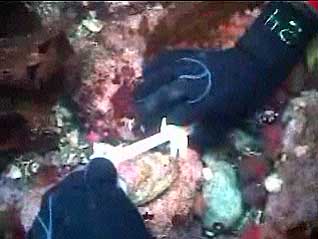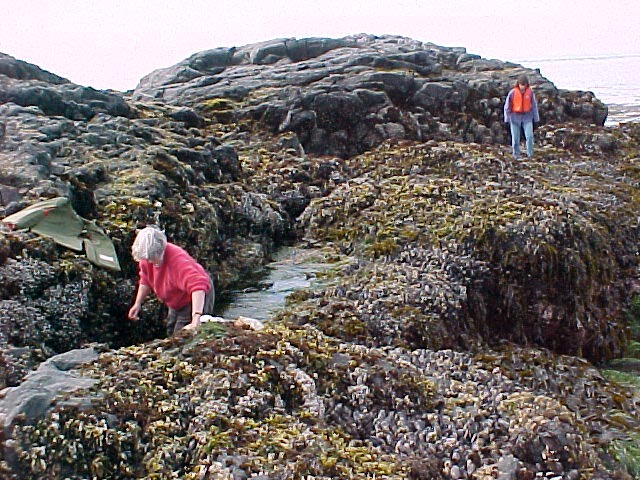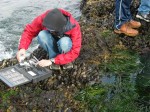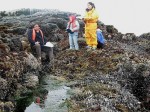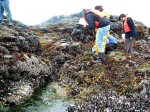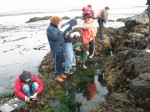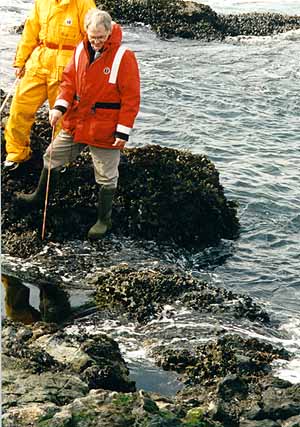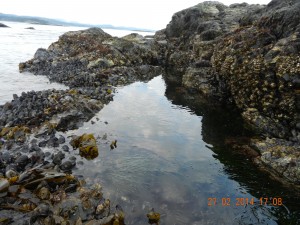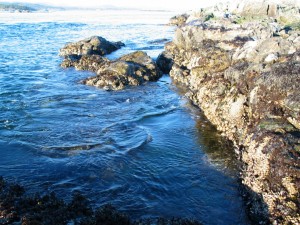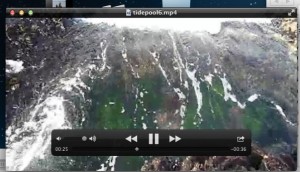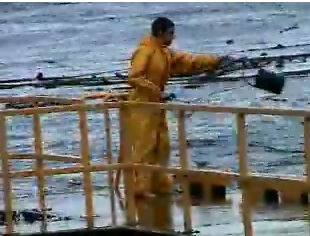 From From1921 until 1997 daily records of Seawater Temperature and Salinity were manually taken at Race Rocks by the Lightkeepers and assistants. In 1997 the station was automated and Lester Pearson College took over the hiring of the Lightkeeper Mike Slater and his wife Carol as Guardians for the Ecological Reserve / Marine Protected Area. They maintained the daily sea temp and salinity records until their retirement in 2009. The records have been submitted monthly to the Institute of Ocean Sciences, thus continuing this important long term record. See the Decade Comparisons:Sea Surface Temperature at Race Rocks- 1921-1930 and 1995-2005
|
|
Garry gives a good demonstration of when one should avoid taking seawater temperatures!~ (Photo by Barry Herring Feb 2009)
|
|
SEA TEMPERATURE 1921 to 2008 FROM British Columbia Lightstation Sea-Surface Temperature and Salinity Data (Pacific), 1914-presentAlso http://www.pac.dfo-mpo.gc.ca/science/oceans/data-donnees/lighthouses-phares/data/racerockday.txt |
| Refer to the File “Temperature Changes Through Time for an Educational exercise on Sea water Temperature changes. |
| OCEAN WARMING: The long-term Sea temperature record at Race Rocks has been pointed out as one of the pieces of evidence that has accumulated on global warming. Terry Glavin, in reviewing the book The Weather Makers by Tim Flannery ( Harper Collins Publishers, 2006) says :” The Pacific Ocean itself is getting warmer. Measurements at the Race Rocks lighthouse near Victoria show an average rise in temperature of 1°C since 1921, which doesn’t sound like much until you remember that its only 10°C in the other direction that separates us from the deep freeze of the Ice Age. The ocean, absorbing increasing volumes of carbon dioxide, is becoming more acidic too, inhibiting the production of plankton, the basis of all life in the sea.”The rest of the article may be seen at http://www.straight.com/content.cfm?id=17132 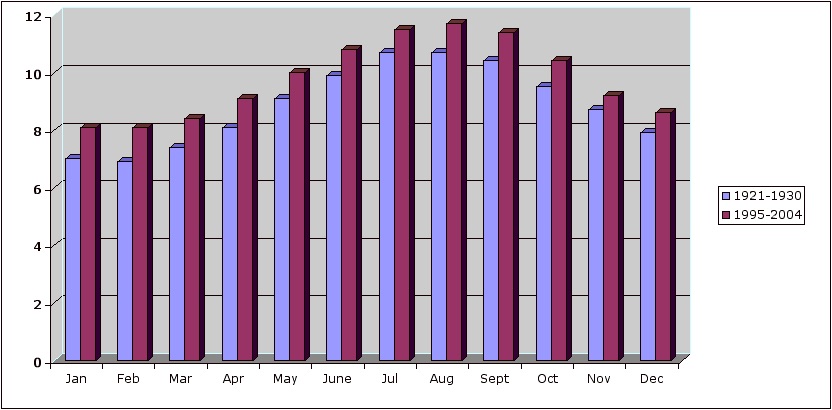 See this file for our own analysis which supports this statement: See this file for our own analysis which supports this statement: |
page 21 State of the Pacific Ocean 2005 context.http://www.pac.dfo-mpo.gc.ca/sci/psarc/OSRs/StateofOceans2005fnl.pdfTwo references are made to Race Rocks Sea Temperature data. page 6 and page 31 |
| State of the Pacific Ocean , 2006 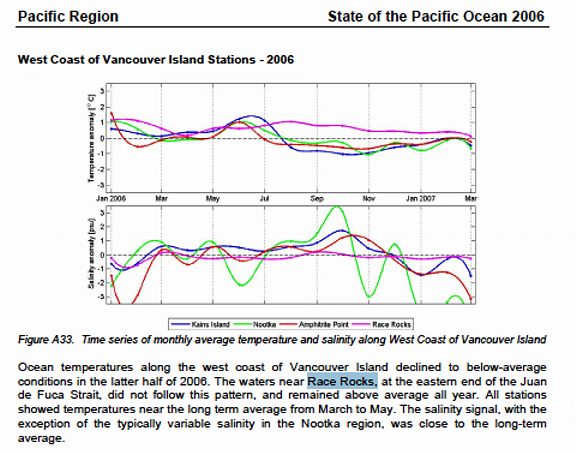 state of the pacific ocean 2006,page 36 ” Ocean Temperatures along the west coast of Vancouver island declined to below average conditions in the latter half of 2006. The waters of race Rocks …did not follow this pattern, and remained above average all year.” |
| RESPONSE OF ORGANISMS TO SEAWATER TEMPERATURES: |
| The seawater in the Strait of Juan de Fuca has a very narrow variation in temperature range. It is important to understand about Heat Capacity, as it is partly due to this ability of water to warm up slowly and cool off slowly that the climate of Vancouver Island and the lower mainland of British Columbia has the mildest weather in Canada. |
| Heat capacity is the ratio of the heat energy absorbed to the rise in temperature. Objects with high heat capacity, such as water, require a great amount of heat energy to change temperature. Materials with low heat capacities, such as air, easily change temperature with small amounts of heat energy. These
Other ideas to be developed here: 2. 3. 4. |
 |
Dr.
Kate Edwards of the University of Washington School of Oceanography is doing research on the sea temperatures of the Strait of Juan de Fuca. (click on image to left).She maintains web pages at: Strait of Juan de Fuca page: http://www.ocean.washington.edu/~kate West Coast headlands page: http://www-ccs.ucsd.edu/~kate |
| Jan Newton is at the Washington state Department of Ecology and is interested in how the Straits affect Puget Sound. She has organized the “Joint Effort to Monitor the Straits,” which regularly sample the three stations south of San Juan Island in the map at http://www.ecy.wa.gov/apps/eap/marinewq/mwdataset.asp . Click on the Station Group Puget Sound, and the Selected Station – Juan de Fuca. |
|
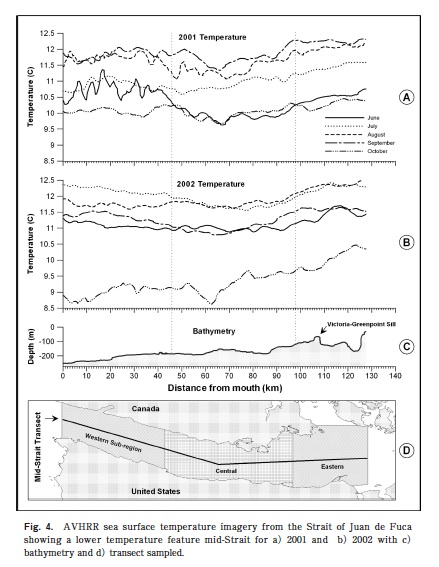 This paper references Strait of Juan de Fuca Temperatures |
| Educational Exercises Using Data From Race Rocks – Excel and Statistics |

